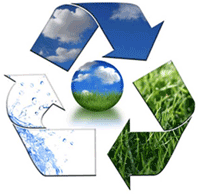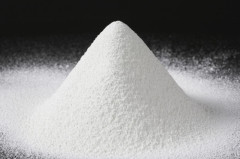Sustainability
Recycling waste from industrial processes.

Recycled paper produces a waste stream that is an
environmental problem
CalciTech's technology enables paper producers to recycle all
the minerals used in paper. This brings significant environmental and product benefits by eliminating disposal costs and replacing quarried minerals from distant sources with a recycled mineral that
has better brightness, whiteness, opacity and printability than the original.
By enabling the raw material to be renewed in a closed loop, the
paper industry can move closer towards the goal of zero waste, zero environmental impact and carbon footprint-free production. This will significantly reinforce their sustainability
credentials.
The usage of recycled paper has reached 50 million tonnes in
Europe and continues to grow as the demand for sustainable products increases. However it is not generally realised that paper contains up to 40% minerals which remain as a waste sludge after the
recovery of the cellulose fibres. The elimination of this sludge is a growing problem following EU Waste and Landfill Directives. Similar problems exist with recycled paper in North America
and China.
CalciTech's new process overcomes the problem of impurities that
has hitherto hindered the re-use of these minerals. The new process uses CalciTech's original technology for treating waste lime and applies it to solve a growing environmental problem. Trials have
been successfully completed with waste from a range of paper mills. The Specialty Calcium Carbonate produced from this waste is of high brightness and low abrasivity.
PVC production using the acetylene process creates carbide
lime which is an environmental hazard.
Carbide lime is one of the original calcium raw material sources
evaluated for use in the CalciTech SCC process.
This material is a waste by-product composed of impure calcium hydroxide that arises from the production of acetylene gas through the reaction of
calcium carbide (CaC2) with water.
The calcium carbide is produced by heating coke and low quality
quicklime to very high temperature in an electric arc furnace. The end product is typically only 80% pure with significant quantities of lime impurities and unreacted coke present. After the
generation of acetylene gas, these calcium carbide impurities end up in the carbide lime, which, in turn, is usually disposed of in large landfills and lagoons.

